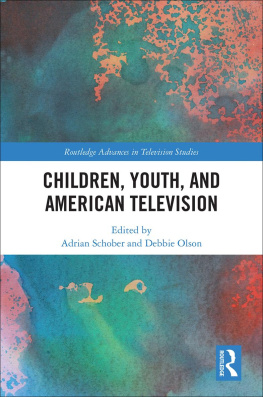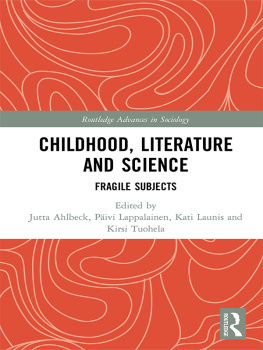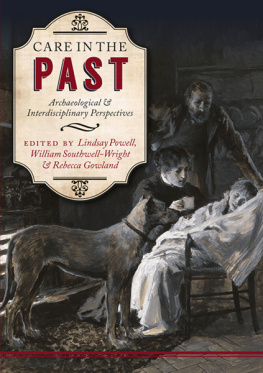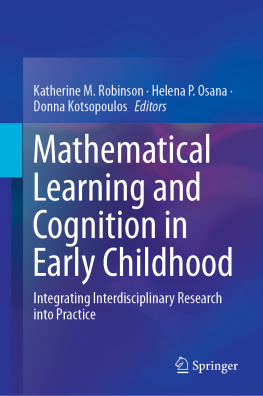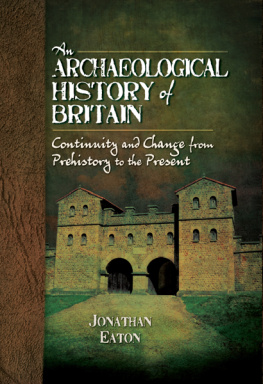The Archaeology of Childhood
THE INSTITUTE FOR EUROPEAN AND MEDITERRANEAN ARCHAEOLOGY DISTINGUISHED MONOGRAPH SERIES
Peter F. Biehl, Sarunas Milisauskas, and Stephen L. Dyson, editors
The Magdalenian Household: Unraveling Domesticity
Ezra Zubrow, Franoise Audouze, and James G. Enloe, editors
Eventful Archaeologies: New Approaches to Social Transformation in the Archaeological Record
Douglas J. Bolender, editor
The Archaeology of Violence: Interdisciplinary Approaches
Sarah Ralph, editor
Approaching Monumentality in Archaeology
James. F. Osborne, editor
The Archaeology of Childhood
Gner Cokunsu, editor

Logo and cover/interior art: A vessel with wagon motifs from Bronocice, Poland, 3400 B.C. Courtesy of Sarunas Milisauskas and Janusz Kruk, 1982, Die Wagendarstellung auf einem Trichterbecher au Bronocice, Polen, Archologisches Korrespondenzblatt 12: 141144
Published by
State University of New York Press, Albany
2015 State University of New York
All rights reserved
Printed in the United States of America
No part of this book may be used or reproduced in any manner whatsoever without written permission. No part of this book may be stored in a retrieval system or transmitted in any form or by any means including electronic, electrostatic, magnetic tape, mechanical, photocopying, recording, or otherwise without the prior permission in writing of the publisher.
For information, contact
State University of New York Press, Albany, NY
www.sunypress.edu
Production, Eileen Nizer
Marketing, Michael Campochiaro
Library of Congress Cataloging-in-Publication Data
The archaeology of childhood : interdisciplinary perspectives on an archaeological enigma / edited by Gner Cokunsu.
pages cm. (SUNY series, The Institute for European and
Mediterranean archaeology distinguished monograph series)
Includes bibliographical references and index.
ISBN 978-1-4384-5805-2 (hardcover : alkaline paper)
ISBN 978-1-4384-5806-9 (e-book)
1. Children, Prehistoric. 2. ChildrenHistory. 3. InfantsHistory. 4. Human remains (Archaeology) 5. Social archaeology. 6. Household archaeology. I. Cokunsu, Gner.
GN799.C38A73 2015
10 9 8 7 6 5 4 3 2 1
This book is wholeheartedly dedicated to Dr. Saubhagya Shah of Harvard University, a very precious friend and brilliant scholar, whom I lost in very young age.
Contents
| Jane Eva Baxter |
| Kathryn Kamp |
| Scott R. Hutson |
| Joanna Sofaer |
| Nurit Bird-David |
| Eva Rosenstock |
| Keri A. Brown |
| Jack A. Meacham |
| Paul G. Bahn |
| Peter F. Biehl |
| Sharon K. Moses |
| Susan Langdon |
| David Soren |
| Jeannine Diddle Uzzi |
| Kyle Somerville |
Illustrations
Tables
Acknowledgments
The IEMA Distinguished Monograph Series Editors would like to thank Thomas Harper, Hannah Quaintance, and Heather Rosch for copyediting and indexing and editorial assistance for the production of this book. We would also like to express our gratitude to the staff at SUNY Press, namely Michael Campochiaro, Rafael Chaiken, Ryan Morris, and Michael Rinella, for their assistance in publishing this volume. And finally, we would like to thank all the authors for their excellent chapters and their patience and support.
I NTRODUCTION
Children as Archaeological Enigma
Gner Cokunsu
The history of childhood is a nightmare from which we have only recently begun to awaken.
Lloyd De Mause, The History of Childhood
T he notions of children and childhood are seriously underresearched subjects in archaeology. This is regrettable for several reasons, discussed below. This volume is a modest attempt to redress this imbalance.
I should admit that the theme of this book, children in the archaeological record, is not my specialty but a product of my long-lasting curiosity. My curiosity greatly increased during my PhD research. While my specific interest in the presence of ancient children in archaeological contexts goes back to my first field experience while in college, I became more conscious of these children during my PhD research while, firstly, observing potential knapping marks of children on flint artifacts and secondly, observing current-day rural childrens activities and objects, which were sometimes found in a very similar form and context to those in archaeological excavations on which I have worked. Through my graduate course, Children in Archaeological Context (Advanced Archaeological Research, APY 736 COS), and the preparation of the Third IEMA Visiting Scholar Spring Conference (Children as Archaeological Enigma: Are Children Visible or Invisible in the Archaeological Record?), as well as the preparation of this subsequent volume during and after my postdoctoral fellowship at the Institute for European and Mediterranean Archaeology (IEMA) at SUNY Buffalo, the subject became of great interest to me. Since then I have delved further into this essential subject in order to explore it more deeply and to contribute to a better understanding of the development of childhood from an archaeological perspective. I hope that this volume will open new vistas to archaeologists who have not thought about the children of the past.
Interest in the archaeology of children and childhood is very recent and, for several reasons that will be discussed later, moves forward slowly despite continuing research by some archaeologists (all women!), many of whom are contributors to this volume. These include Kathryn Kamp, Jane Eva Baxter, Joanna Sofaer, and Traci Ardren. These researchers are following in the footsteps of seminal work by Jenny Moore and Eleanor C. Scott in Invisible People and Processes: Writing Gender and Childhood into European Archaeology , which appeared in 1997. This, in turn, was followed by Scotts The Archaeology of Infancy and Infant Death two years later, Joanna R. Sofaer Derevenskis Children and Material Culture in 2000, Jane Eva Baxters The Archaeology of Childhood in 2005, Traci Ardren and Scott Hutsons The Social Experience of Childhood in Ancient Mesoamerica in 2006, and by the IEMA Conference organized by me in 2010 and the present volume. The Society for the Study of Childhood in the Past (SSCIP) and this multidisciplinary societys journal, The Journal of Childhood in the Past , are certainly worthy of mention in this overview for their effort to promote the study of childhood and children in the past through conferences, lectures, and publications since the late 2000s under the editorial direction of Eileen Murphy and Sally Crawford.


